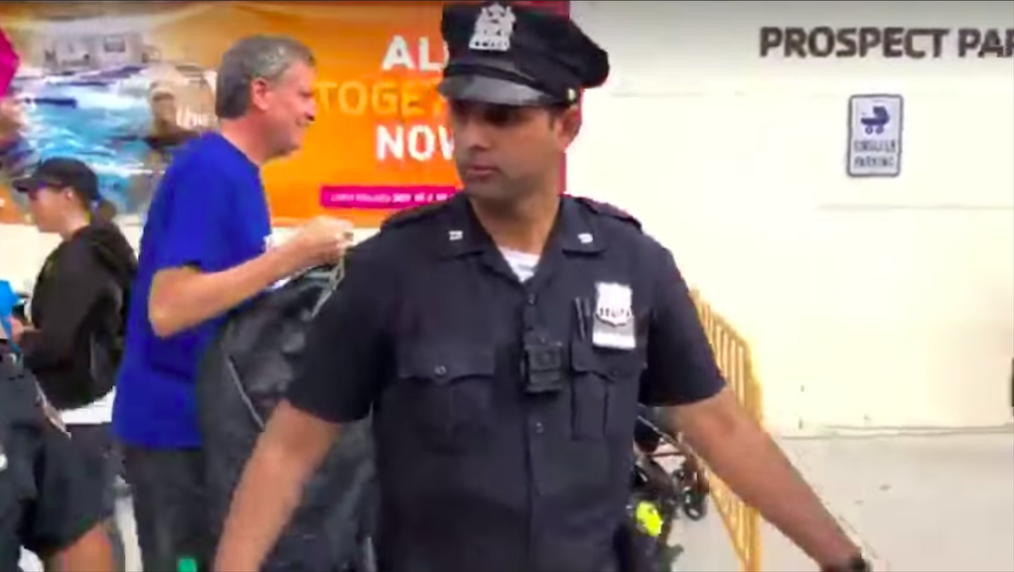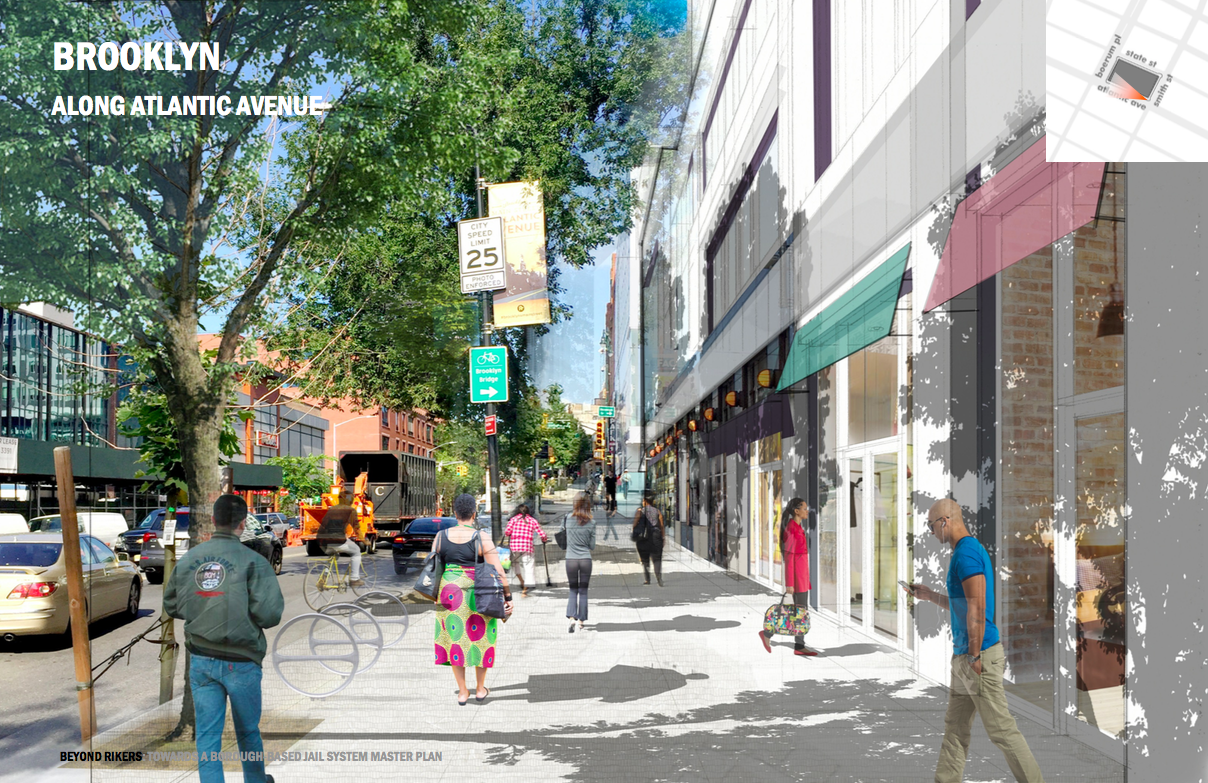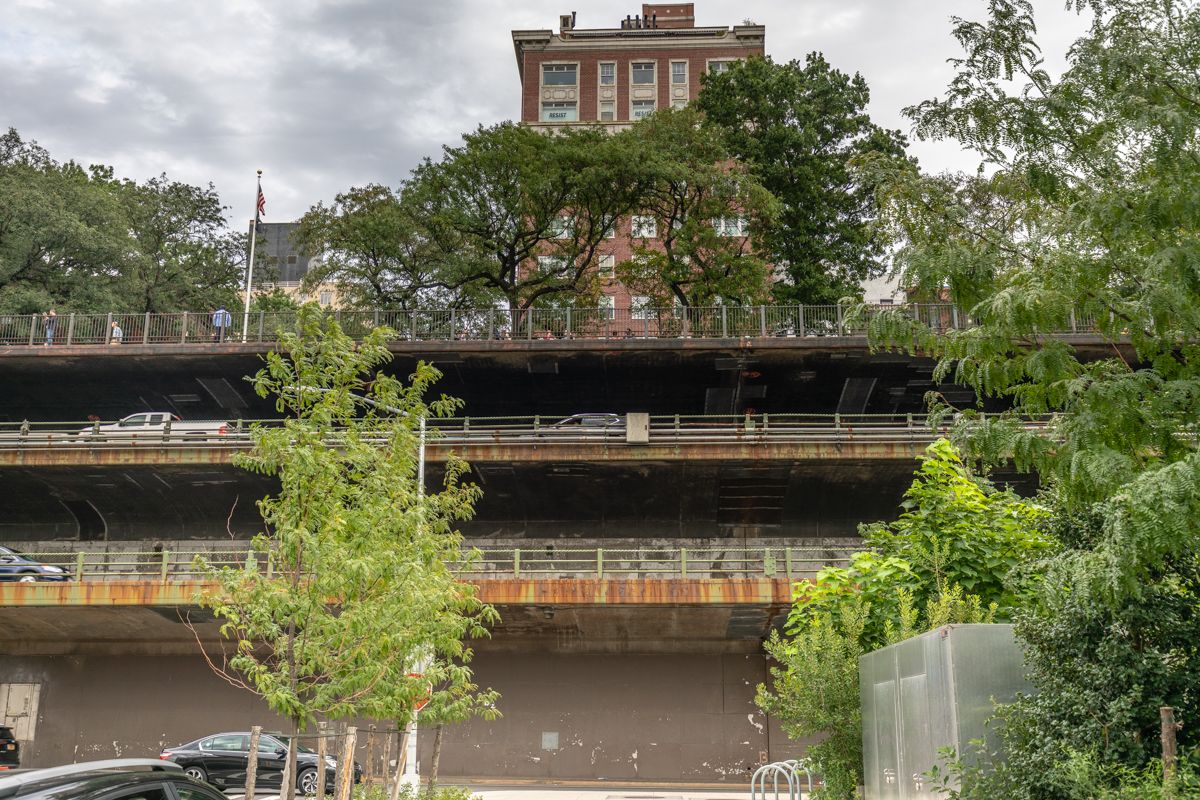Mayor Discusses Confrontation at YMCA, BQE Fix, And His Brooklyn Jail Plan

PARK SLOPE/BROOKLYN HEIGHTS/BOERUM HILL – Brian Lehrer’s “Ask The Mayor” segment returned on Friday after a two week hiatus with Mayor Bill de Blasio speaking with the radio host for more than thirty minutes, covering several Brooklyn-related topics.

Lehrer began the show by asking the Mayor about his recent encounter with a homeless activist who confronted de Blasio during his workout at the Park Slope YMCA. Nathylin Flowers Adesegun, a 72-year-old homeless activist, approached the Mayor inside the gym on October 5th and asked him why only 5% of the 300,000 units in his affordable housing plan are going to homeless New Yorkers.
The Mayor defended himself to Lehrer by noting all the work he’s done over the years on behalf of the city’s homeless population, saying, “I care very deeply about people who find themselves without a home.” The Mayor said that his administration has “gotten over 90,000 people out of shelters and into better housing…we’ve stopped thousands of people from being evicted and ending up in shelters. We’ve gotten almost 2,000 people who are on the street off the street and into a safe place….”
De Blasio insists while he cares “about every individual who is in that circumstance,” he didn’t feel the Y was the appropriate venue for a discussion on the topic. “Where I draw a line is that place I go is a place that you’re not supposed to be filming in…. That’s a rule for everybody in there. The minute I saw that people were filming, that violates both the rules of that place but also it’s just not fair to everyone else around me, and I won’t engage someone in that circumstance.”
He added if New Yorkers want to “raise an issue” with him, there are “many opportunities” to do so, such as town hall meetings or call-in shows such as Lehrer’s. The Mayor insists that he talks to people “all the time on the streets and the subways,” but his gym is “not the place to do it, with a camera.”

The Mayor briefly touched on his Borough-Based Jail Plan which would shut down Rikers Island by 2027 and build or expand facilities in Brooklyn, the Bronx, Manhattan, and Queens. The plan would include demolishing the existing 800-bed Brooklyn Detention Center at 275 Atlantic Avenue and replacing it with a 1,510-bed facility with ground-floor retail, community space, and parking.
Lehrer pointed out that during recent scoping meetings/public hearings on the new detention centers, City Council Members representing neighborhoods where the facilities are proposed have faced fierce opposition from community members. Council Member Stephen Levin was shouted down when he voiced his support for “modern, humane” jails at the Brooklyn meeting last month.
De Blasio defended his borough-based plan saying the facilities will be modern, safer for inmates and officers, focused on rehabilitation, and would provide visitors better access. When Lehrer asked the Mayor why he was absent from the community meetings about the proposed jails, the Mayor noted, “I think the four Council Members involved have shown tremendous conscience, decency, goodness in saying ‘this is the right thing to do,'” but added that none have requested that he speak to their constituents, saying, if they did, “Of course I would be there.”

Another contentious Brooklyn topic Lehrer raised was NYC DOT’s two proposed options to fix the triple cantilever of the BQE in Brooklyn Heights. The first “traditional” option would have crews working incrementally, lane by lane and would take about eight years or more and cost $3.4 to $4 billion. A second “innovative” option would address the 1.5 mile stretch of the BQE by demolishing the popular Brooklyn Heights Promenade and building a temporary six-lane elevated roadway in its place. This approach would cost $3.2 to $3.6 billion and take approximately six years.
The Mayor said the options are “both painful,” and stressed “The BQE is one of the lifelines of the city and it has to be fixed. If we don’t get to work fixing it soon, it will be out of service and that would undermine everything.”
He noted that the first option would “cause a huge number of vehicles to go through the streets of Brooklyn and clog up residential areas and business areas and I think that’s extraordinarily problematic but would also take longer.”
The Mayor told Lehrer he favors the second option, the “pull-the-band-aid-off approach.” He acknowledged that this option would “definitely cause a lot of inconvenience” and would “definitely have a big impact” to the surrounding neighborhood but noted “I think it’s the way to address the bigger problem once and for all and as quickly as we can do it.”




